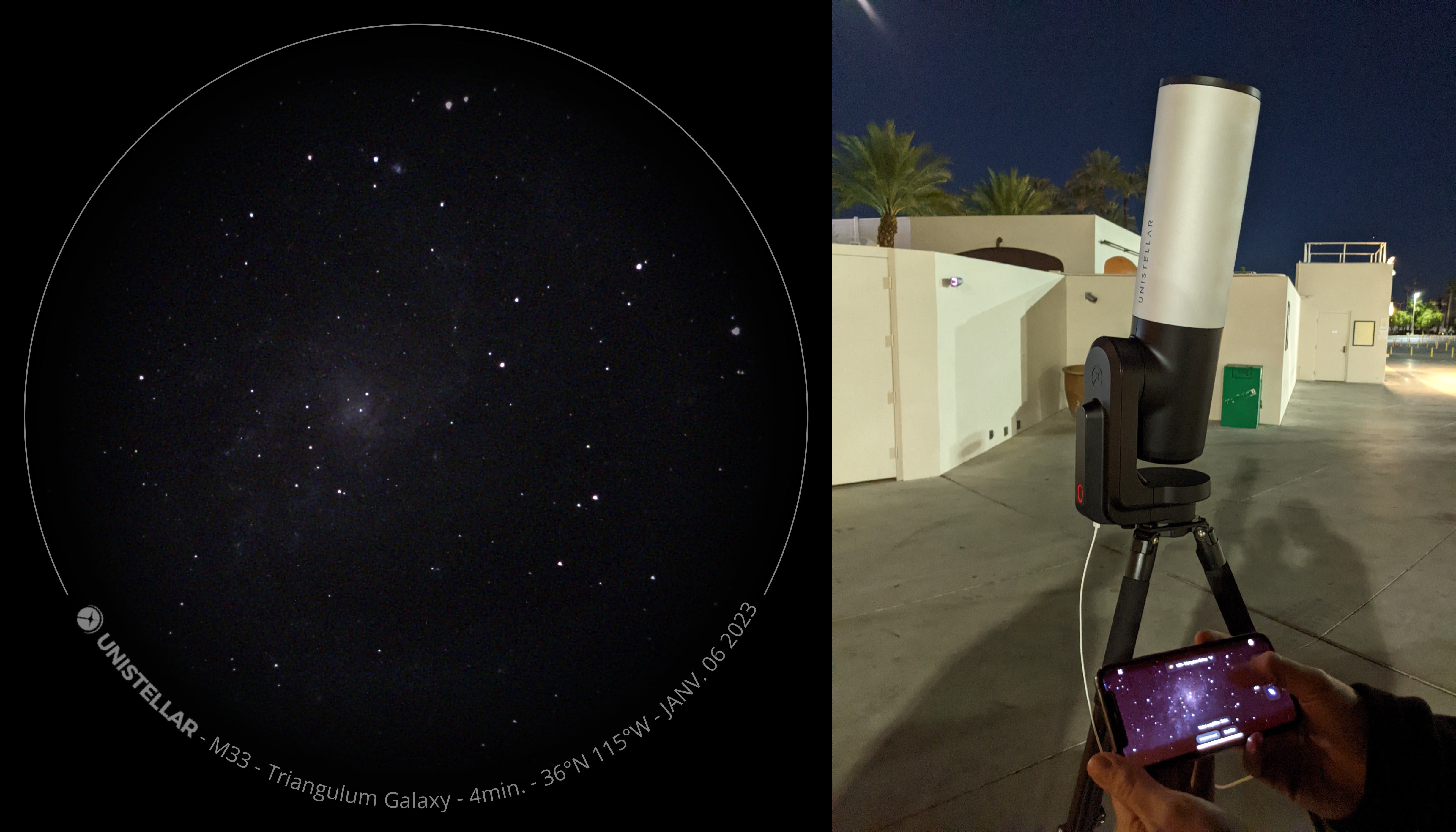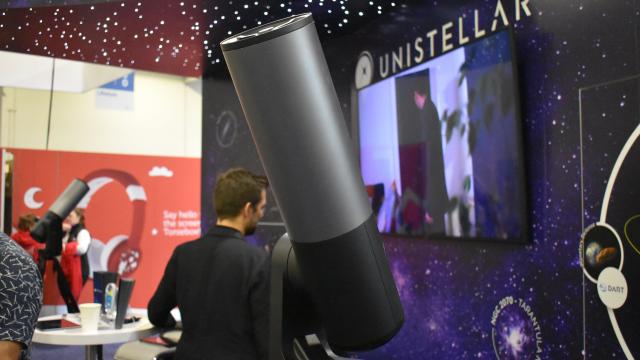It’s sometimes easy to forget Las Vegas is built on a desert. It’s a long, flat plane that angles up toward the rim of multiple mountain ranges, like a high-rimmed plate. And as imagery from space shows, Las Vegas, sitting in the centre of that plate, is an immense concentration of bright light surrounded by a stretch of Nevada desert darkness.
For any amateur astronomer living in Las Vegas, the smart move would be to drive deep into the desert or, even better, further out to the mountains. At least if they want to actually see the stars above.
Electronic telescope maker Unisteller’s upcoming eQuinox 2 telescope is promising to let citizen scientists glance at the heavens despite ambient light pollution. This so-called “Smart Light Pollution Reduction” claims to digitally resolve images without the negative effects of light pollution. Laurent Marfisi, the company co-founder and CEO, told me the new telescopes filter out light that is slightly dimmer than the light it sees from distant stars. By taking a series of short exposures through the telescope lens, the telescopes essentially resolve images over time, which the company said enhances the colour and detail of celestial objects.
I didn’t get to demo the eQuinox 2, though the company instead let me try out the eVscope 2. This was a more expensive telescope — nearly twice the cost of the eQuinox, with a 7.7 megapixel resolution as well as an eyepiece. The eQuinox 2 has a 6.4 megapixel resolution and is only controllable by phone or tablet, but both devices use the same Smart Light Pollution Reduction technology, which is what I’m really there for.
The eQuinox2 will have 64 gigabytes of raw data storage, and any overflow storage is meant to be saved on a mobile device. It also has a pretty significant 10 to 11 hours of battery life, according to the company.
Unisteller boasts it has a catalogue of 5,000 celestial objects that the telescope can automatically angle for, though users should be able to set their own coordinates, especially as the company has tried to promote its “citizen scientist” community, like those who watched NASA’s recent DART mission from home. There were few stars visible from the ground so close to Vegas, but the eVscope 2 didn’t seem to have much trouble tracking Venus, Mars, or the far distant Triangle Galaxy. It took about 10 minutes for the telescope to orient itself and resolve an image, but when it finally did, I had to hold back my breath to keep from gasping.

Marfisi said, for those with more time and patience than I had, you could sit there for an hour or more as the camera iterated on the images it was capturing, which should resolve into a more detailed image over time. The app also included a fair bit of information about what we were looking at, including some history and basic scientific facts. You won’t get Webb Telescope-quality images, especially in just a few minutes, but astronomers will be granted slightly better images if they’re willing to wait for them.
Despite all the promises of anti-light pollution tech, users will still have to keep multiple factors in mind. Marfisi told me that night it was relatively humid for the usually dry Las Vegas air, evidenced by the diffused spotlights coming from the nearby Mandalay Bay Hotel. Even with the in-built technology meant to filter light pollution, there will still be many considerations for the avid stargazer when breaking out their telescope, especially in an urban setting.
Of course, neither the eVscope nor the eQuinox2 can shut out all ambient light. Company representatives and I set up shop outside the Mandalay Bay Convention Centre toward the southern end of the strip. Though we were avoiding most of the most extreme lights from the casinos and restaurants, there were still spotlights and other lamps buzzing over our heads to the north, which meant we wouldn’t get a good picture if the scope was angled that way. The device also can’t look through direct light, so one can expect urban stargazers will still have to position themselves carefully in order to observe certain objects in space.
My time with the Unistellar telescopes did leave me very intrigued. The light pollution reduction tech did seem to drop out much of the ambient light, though I would need to do a lot more testing with the tech to give it a full grade.
The eQuinox 2 is up for preorder for $US2,499 ($3,469) and is set for release in February.
